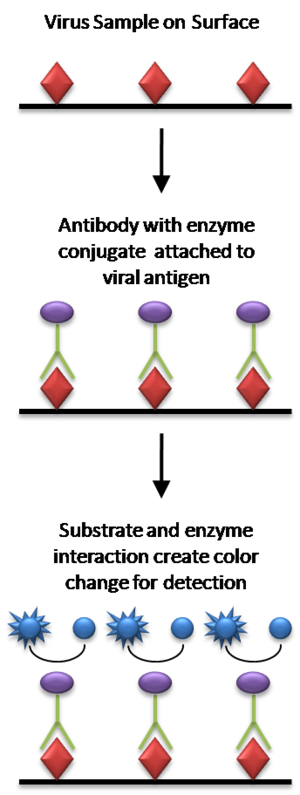ELISA
From WikiLectures
Enzyme-Linked Immunosorbent Assay (ELISA) is a sensitive immunoassay that uses an enzyme linked to an antibody or antigen as a marker for the detection of a specific protein, especially an antigen or antibody. It is a biochemical test mainly used in Immunology. It was the first most basic test to determine if an individual is positive for a selected pathogen, such as HIV.
Principles[edit | edit source]
- An unknown amount of antigen is fixed to a solid surface (inner surface of a test tube)
- Preparation of the specific antibodies coupled to an enzyme
- These antibodies will conjugate with the antigens
- Substrate is added and it will bind to the enzyme
- The subsequent reaction produces a detectable signal, most commonly a color change in the substrate.
Types[edit | edit source]
- "Indirect" ELISA
- Sandwich ELISA
- Competitive ELISA
- Multiple and Portable ELISA
Applications[edit | edit source]
- Determination of serum antibody concentrations
- Detection of potential food allergens (milk, peanuts, walnuts, almonds, eggs)
- Detection of antigens (pregnancy hormones, drug allergens, mad cow disease)
- Detection of myobacterial antibodies in tuberculosis, rotavirus and enterotoxin E. coli in feces, hepatitis B markers in the serum and gonorrhea bacteria



